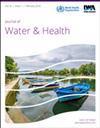加纳三个水体鱼类药物残留分析及风险评估
IF 2.5
4区 环境科学与生态学
Q3 ENVIRONMENTAL SCIENCES
引用次数: 0
摘要
非法采矿掩盖了药物污染,尽管暴露于药物废物很高。食用可能被来自河流的药物污染的鱼几乎没有受到关注,也没有构成潜在威胁。在本研究中,研究了一种抗生素(氯霉素)、五种激素(黄体酮、17- β雌二醇、雌酮、17a-乙炔雌二醇和1)、三种环境污染物(4-对壬基酚、4-叔辛基酚和双酚A)、一种巴比妥酸盐(Primidone)和一种镇痛药(双氯芬酸钠盐)在Pra河、Narkwa河和Volta河中的残留。结果显示,普拉河的药物浓度高于纳克瓦河和沃尔特河。除双酚a外,其他环境污染物的危害系数(HQs)均在1以上。此外,本研究的HQs表明,三河鱼的消费者对氯霉素(19)、17a-乙炔雌二醇(4)、雌酮(1.366)、双氯芬酸钠盐(3.29)、孕酮(4.598)、4-叔辛基酚(87.2)和4-对壬基酚(7.252)的危害系数可忽略,对E2(0.687)、Primidone(0.014)、睾酮(0.16)、双酚A(0.642)。在所研究的鱼类中,所有药物的浓度最高的依次是Clarias gariepinus, Labeo senegalensis和Chrysichthys nigrodigitatus。本文章由计算机程序翻译,如有差异,请以英文原文为准。
Analysis and risk assessment of pharmaceutical residues in fish from three water bodies in Ghana
Abstract Illegal mining has overshadowed pharmaceutical pollution even though exposure to pharmaceutical waste is high. Consumption of fish potentially polluted with pharmaceuticals from the rivers continues with little concern or potential threat it poses. In the present study, the residues of one antibiotic (Chloramphenicol), five hormones (progesterone, 17-beta Estradiol, Estrone, 17a-Ethynylestradiol, and one), three environmental contaminants (4-para-nonylphenol, 4-tert-octylphenol, and Bisphenol A), one barbiturate (Primidone) and one analgesic (Diclofenac sodium salt), were investigated from fish samples from the rivers Pra, Narkwa, and the Volta. The results show a high concentration of drugs in River Pra in comparison to those in Rivers Narkwa and Volta. The hazard quotients (HQs) for the environmental contaminants were all above 1, except Bisphenol A. Furthermore, the HQs from this study suggest that consumers of fish from any of the three rivers stand a hazard risk of Chloramphenicol (19), 17a-Ethynylestradiol (4), Estrone (1.366), Diclofenac sodium salt (3.29), Progesterone (4.598), 4-tert-octylphenol (87.2), and 4-para-nonylphenol (7.252), but negligible risk against E2 (0.687), Primidone (0.014), Testosterone (0.16), and Bisphenol A (0.642). Of the fish species studied, the highest concentration of all pharmaceuticals put together is found in Clarias gariepinus, Labeo senegalensis, and Chrysichthys nigrodigitatus in that order.
求助全文
通过发布文献求助,成功后即可免费获取论文全文。
去求助
来源期刊

Journal of water and health
环境科学-环境科学
CiteScore
3.60
自引率
8.70%
发文量
110
审稿时长
18-36 weeks
期刊介绍:
Journal of Water and Health is a peer-reviewed journal devoted to the dissemination of information on the health implications and control of waterborne microorganisms and chemical substances in the broadest sense for developing and developed countries worldwide. This is to include microbial toxins, chemical quality and the aesthetic qualities of water.
 求助内容:
求助内容: 应助结果提醒方式:
应助结果提醒方式:


